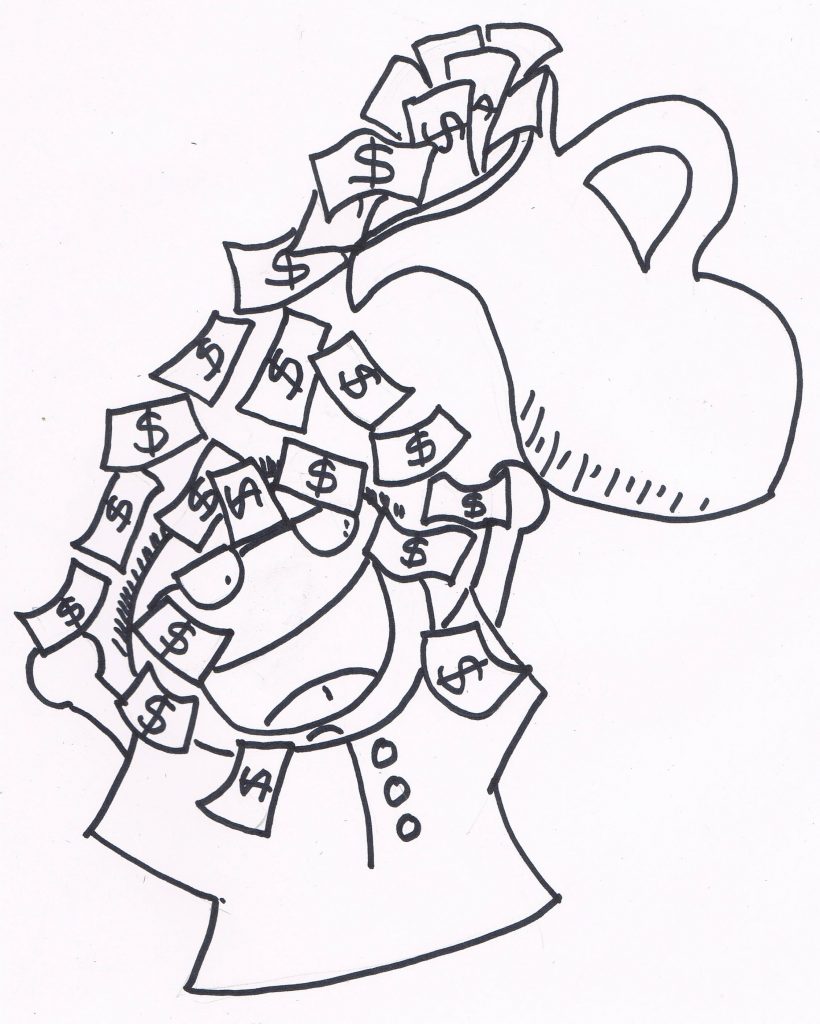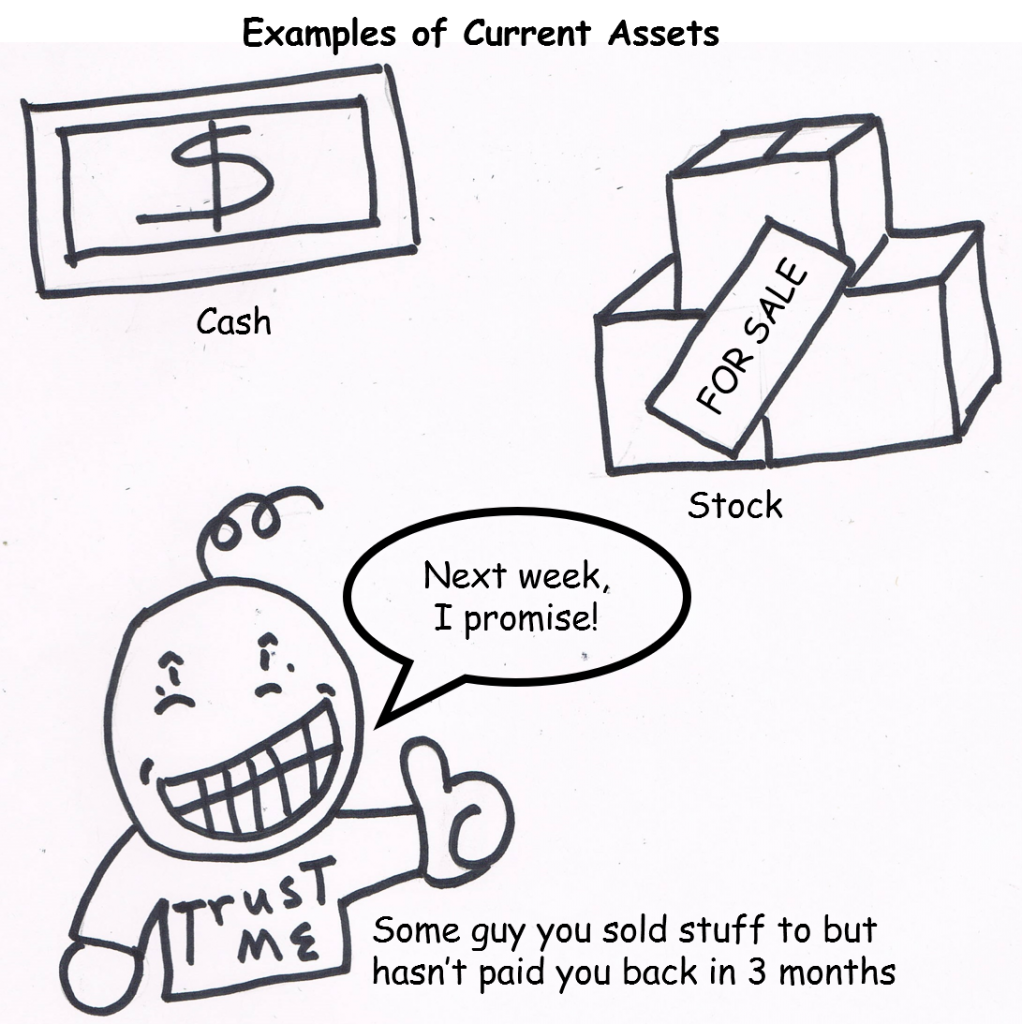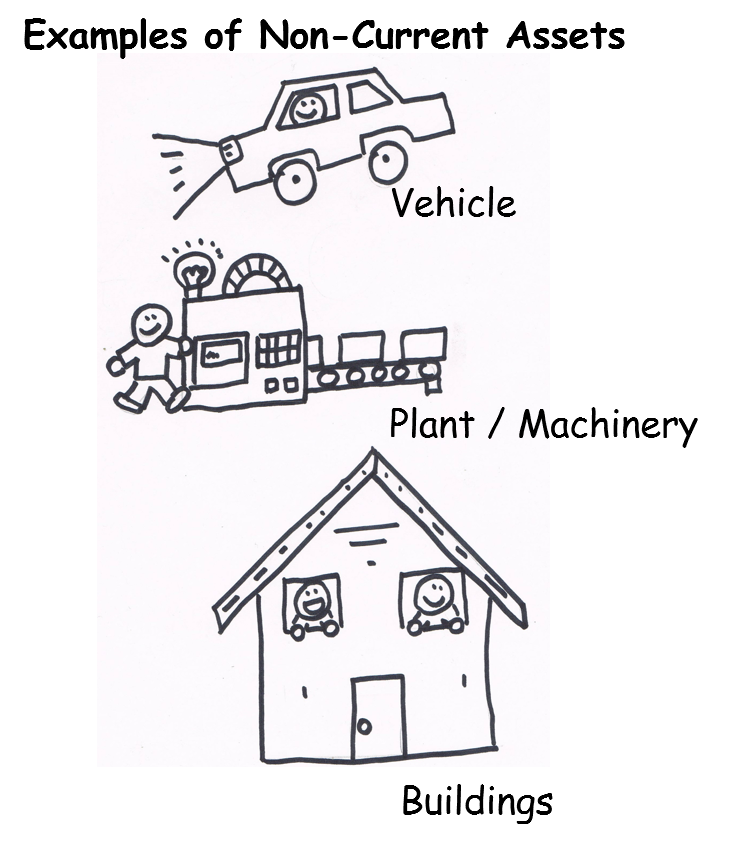
So we know that assets are good right? Assets are always good! Also, the best thing about assets is that you can use assets to buy more assets! Yay!
If this is your first time visiting this blog, I suggest that you go and read about why Assets are Good first before reading this article.
Assets can be broadly categorised into two categories: Current Assets and Non-Current Assets.
Current assets are assets which can be converted quickly into cash within a year. In accounting-ese we call assets that can be turned into cash quickly ‘liquid’. The more liquid an asset is, the easier it is to turn into cash, the less liquid it is, the harder it is to turn into cash. Common types of current assets (in order of most liquid to less liquid) are:
- Cash in bank/hand/under your pillow etc. (because nothing is more liquid than cash!)
- Accounts Receivable – that’s accounting-ese for Customers who owe you money! Chase up those layabouts and they’ll pay up what they owe you (in cash!)
- Inventory/Stock – this is the things that you sell to generate income for your business – the more you sell, the more cash you get! However if you sell on credit (letting your customers pay later) your sales will end up in Accounts Receivable (and you will still need to chase them up to pay up!)

Non-current assets (also known as fixed assets) are assets that you will hold onto for more than a year or so. Generally speaking, non-current assets are not very ‘liquid’. Non-current assets are what most people think of when the word ‘Assets’ are mentioned. Common types of non-current assets are (in no particular order of liquidity):
- A vehicle used by your business to make deliveries
- Furniture used in your office
- Computers used for business work
- Land/Building owned by your business
- Plant/Machinery used to manufacture things for your business
- Long-term deposits/investments held at banks

The easiest way to tell the difference between current and non-current assets is to ask yourself:
“Am I likely to sell this asset for cash within the next 12 months?”
If the answer is yes – then its a current asset!
If the answer is no – then its a non-current asset!
A popular example that accountants like to use to illustrate this difference is the story of a used car dealer:
Jimmy Wang owns JW Motors which is a used car dealership. JW buys and sells cars to make money. JW also owns a company car with a logo for Jimmy’s business use. The cars bought and sold by the business are treated as current assets (inventory/stock) because they will likely be sold in the next 12 months.
Cars held for sale = Stock = Current Assets
The car used by Jimmy is treated as a non-current asset – because Jimmy is unlikely to sell it off in the next 12 months and he uses it to promote his business and meet clients. So even though they are functionally the same, the cars sold by Jimmy and the car used by Jimmy are classified as two different types of assets.
Car used by the business = Fixed Assets = Non-current assets
So there you have it! Not all assets are made equal! By the end of the day, it’s not good enough to have lots of assets if you can’t convert them into cash because remember – Cash is King!
